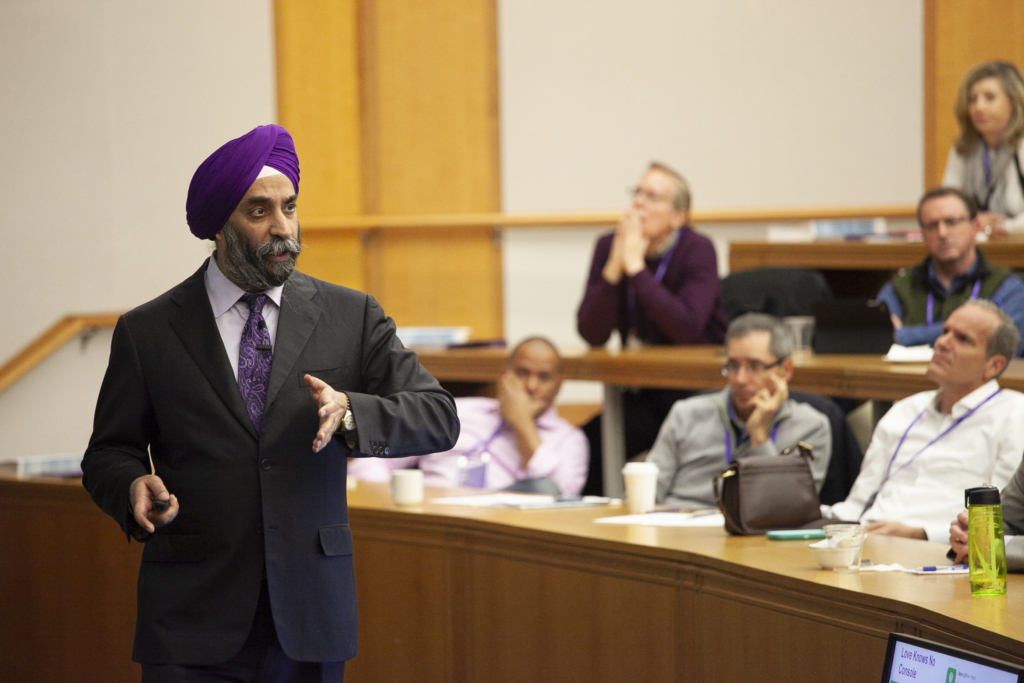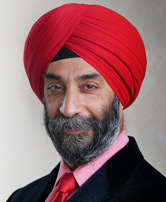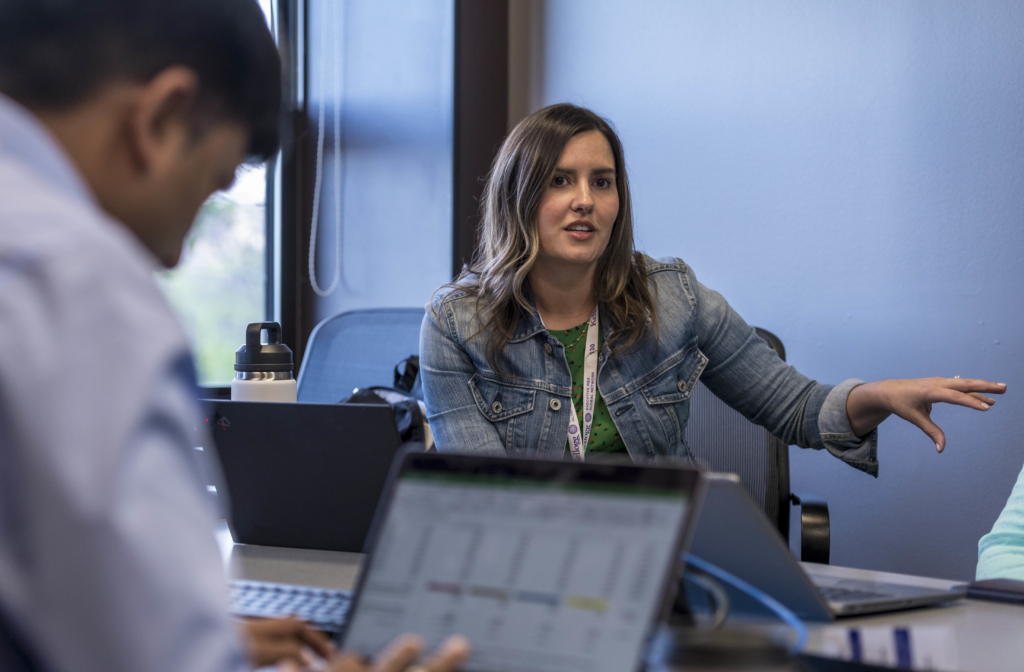
Professor Mohanbir Sawhney leads his Insight Live Session in the Allen Center in Evanston during Kellogg’s Reunion Weekend. Photo by Eddie Quinones.
Just the other day, Mohanbir Sawhney, associate dean of digital innovation and marketing professor at Northwestern’s Kellogg School of Management, was visiting with a student in the school’s executive MBA program.
The student was from India, has two small kids, and was flying to Kellogg’s Miami campus every month for her in-person classes. She values the in-person experience, and the networking and deep discussions with other accomplished executives in her cohort. However, in some months, work and family obligations make travel more difficult. The opportunity log into remote classes from her home country is a saving grace.
“I believe that the future of executive education, the new normal, is omni-channel, blending the best of digital and physical (delivery),” says Sawhney, director of Kellogg’s Center for Research in Technology & Innovation. “Are we doing it in person or virtually? Are we doing it synchronously or asynchronously? We will combine all those formats to reach our learners. The new normal to me is where we really don’t focus on modalities, we focus on learning experiences.”
POST PANDEMIC, WHAT IS THE NEW NORMAL IN EXEC ED?

Mohanbir Sawhney
Even before the pandemic, Sawhney was a pioneer in online executive education. He developed eight SPOCs (Small Online Private Courses) for Kellogg, enrolling more than 15,000 executive students since 2018. Starting next January, he will launch a pilot, blended-format elective for Kellogg executive MBA students that will use core content from his Chief Product Officer program layered with live-virtual sessions. He’s aiming for a 40-60 blend: 40% live and 60% asynchronous.
“We’re offering it as an elective for all of our seven campuses. That’s the value proposition now: Today, if you want to do global, we have global live-in weeks. With this elective, wherever the heck you are, it doesn’t matter,” Sawhney tells Poets&Quants. “If this works, then we’ll roll the model out to other electives. Ultimately, our vision is that all of our executive MBA electives should be offered in this modality. The live virtual session might actually be in person, but combined to the asynchronous content.”
In March 2021, just over a year into the pandemic, Sawhney penned an article for the Harvard Business Review with a provocative title: “Reimaging Executive Education.” The article laid out Sawhney’s views on what exec ed should look like post pandemic including channel-agnostic courses that deliver the same value whether students decide to engage in-person or online, synchronously or asynchronously. With the pandemic still disrupting workplaces and business schools three years later, we wanted to know how Sawhney sees the future of exec ed now.
Our conversation, presented below, has been edited for length and clarity.
Tell us a bit about yourself and Kellogg background.
My PhD is from Wharton, and I have been on the Kellogg faculty going on 30 years, focused on the intersection of marketing technology and innovation. I currently teach courses in technology, marketing, product management and digital marketing.
I’ve also been very active in executive education. In the old days, we only had in-person executive education, but even before the pandemic, I launched my first blended program — not just online, it has a live component — in December 2018. It was just fortuitous that the pandemic happened, and I’ve been leading that space for Kellogg. I currently have eight programs in this format at all different levels. Now we are looking at some interesting crossover programs.
Going back to 2018, and your first hybrid class: What market factors did you see that suggested the format might fit executive students particularly well?
I have believed for a long time that we are offering a very high-value, high-price product to a very limited set of people. So, I’ve always been concerned about expanding reach, accessibility, and affordability. I started a pilot by taking my product management course, which I was offering at the MBA program, and creating an MVP (minimum viable product) of three or four modules. I got together 100 alumni who signed up for free to see how this experience played out.

Kellogg EMBA students. Courtesy photo
And to be honest, in full candor, when I mentioned that I needed money to actually bring this product to market, there was no budget. As a product champion I’ve learned, one, you never take no for an answer and, two, you don’t ask for permission, you ask for forgiveness. I had slush funds from the center that I run, so I funded the pilot myself. We launched in partnership with a startup online education platform, Emeritus, which is now pretty well known, but we were the earliest participant in their program. So, I launched my first program on digital marketing in December 2018 having proven out the model through that pilot.
And then the pandemic happened. Now we are back to the classroom, but we’re exploring a really interesting blended modality. Not forgetting what we learned in the pandemic, but also taking the richness of in-person and creating an omni-channel learning experience that I think is the future.
What has the feedback been?
When I do live sessions, I ask people where they are dialing in from. I was just blown away. There was a guy from Myanmar, someone from Sierra Leone, a guy from Gaza. I mean, there’s no way these folks could have traveled to Kellogg for this. It was just heartening to see.
I have now reached over 100 countries, and besides the revenue implication, the accessibility of executive education implications, these are important branding implications. This is bringing global awareness to Kellogg and its executive programs.
We look at this continuum, and we used to be at just one end of this continuum. Now we can span the entire continuum with a portfolio of offerings that really respond to what people value. I will give you an example: If I am a working professional, and I want to do an executive MBA, I may now have the option — session by session — of either going to campus, attending from a remote geographical location in person, or doing the program virtually. It is truly location agnostic programming – if you want virtual this week, but you want in-person interaction next week, do what you want. The customer decides how they want to engage, that’s what I mean by omni channel.
NEXT PAGE: The ‘new normal’ for exec ed





Questions about this article? Email us or leave a comment below.